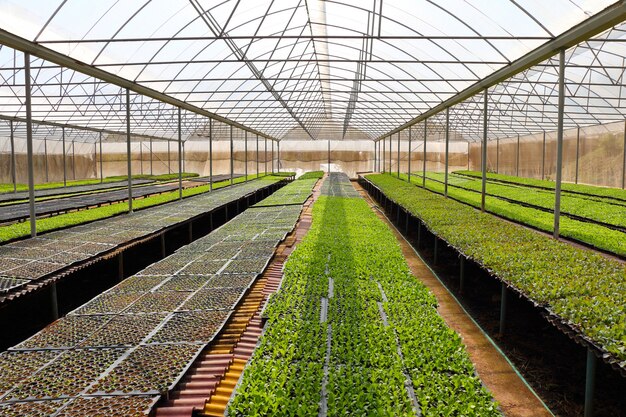Greenhouses are essential for modern farming, allowing farmers to grow crops year-round, protect plants from extreme weather, and control pests and diseases. For South African farmers, building a greenhouse can be a game-changer, especially in areas prone to drought or unpredictable weather. Here’s a step-by-step guide to building a functional and affordable greenhouse.
1. Choose the Right Location
Select a site with maximum sunlight exposure, as sunlight is vital for plant growth. Ideally, your greenhouse should face north-south to maximize sunlight in winter. Ensure the location has good drainage, easy access to water, and minimal wind exposure.
2. Decide on the Greenhouse Size and Design
The size of your greenhouse depends on your farming goals and available space. For small-scale farmers, a tunnel or hoop greenhouse is cost-effective. For larger operations, consider more robust designs like gothic arch or A-frame structures.
3. Select Appropriate Materials
- Frame: Use materials like galvanized steel, aluminum, or treated wood for durability and strength.
- Covering: Choose between polyethylene film (affordable and common), polycarbonate sheets (durable and UV-resistant), or glass (high-cost but offers excellent light transmission).
- Flooring: Opt for gravel, concrete, or compacted soil to promote good drainage and reduce weed growth.
4. Plan for Ventilation and Climate Control
Proper ventilation prevents overheating and allows for adequate air circulation.
- Install roof vents or side vents for natural airflow.
- Use shade cloths or whitewashing to reduce sunlight intensity in summer.
- Consider installing fans or evaporative cooling systems for controlled ventilation.
5. Install an Irrigation System
Watering is critical in a greenhouse. Drip irrigation or a misting system is efficient and prevents water wastage. Connect your irrigation system to a water tank or rainwater harvesting system for sustainability.
6. Ensure Sturdy Foundation and Anchoring
Build a strong foundation to secure your greenhouse, especially in windy areas. Concrete or treated wooden beams are common choices. Use anchors to stabilize the frame, ensuring it withstands strong winds and harsh weather.
7. Add Essential Features
- Benches and Shelves: Create growing space for potted plants and seed trays.
- Thermometer and Hygrometer: Monitor temperature and humidity to maintain optimal conditions.
- Pest Control Measures: Install fine mesh screens to keep insects out. Use natural traps and companion planting to manage pests organically.
8. Focus on Energy Efficiency
- Use solar panels to power fans and lighting systems.
- Opt for LED grow lights for energy-efficient supplementary lighting.
- Insulate your greenhouse to reduce heating and cooling costs.
9. Budget for Your Greenhouse
Building a greenhouse can range from a few thousand rands for a DIY structure to hundreds of thousands for a large commercial setup. Start small if you’re new to greenhouse farming, then expand as you gain experience.
10. Comply with Regulations
Check local regulations and zoning laws to ensure your greenhouse complies with legal requirements. This is particularly important for large structures or those near urban areas.
Benefits of a Greenhouse for South African Farmers
- Year-Round Production: Extend the growing season and grow out-of-season crops.
- Pest and Disease Control: Reduce exposure to harmful pests and diseases.
- Efficient Water Use: Minimize water loss through controlled irrigation systems.
- Higher Yields: Create optimal conditions for crop growth, resulting in better yields.
Building a greenhouse is a smart investment for South African farmers looking to boost productivity and protect crops from the challenges of a changing climate. By following this guide, you can create a greenhouse tailored to your needs and enjoy the benefits of controlled farming. Whether you’re a small-scale grower or a commercial farmer, a greenhouse is your gateway to sustainable and profitable farming.
Join 'Farmers Mag' WhatsApp Channel
Get the latest Farming news and tips delivered straight to your WhatsApp
CLICK HERE TO JOIN






